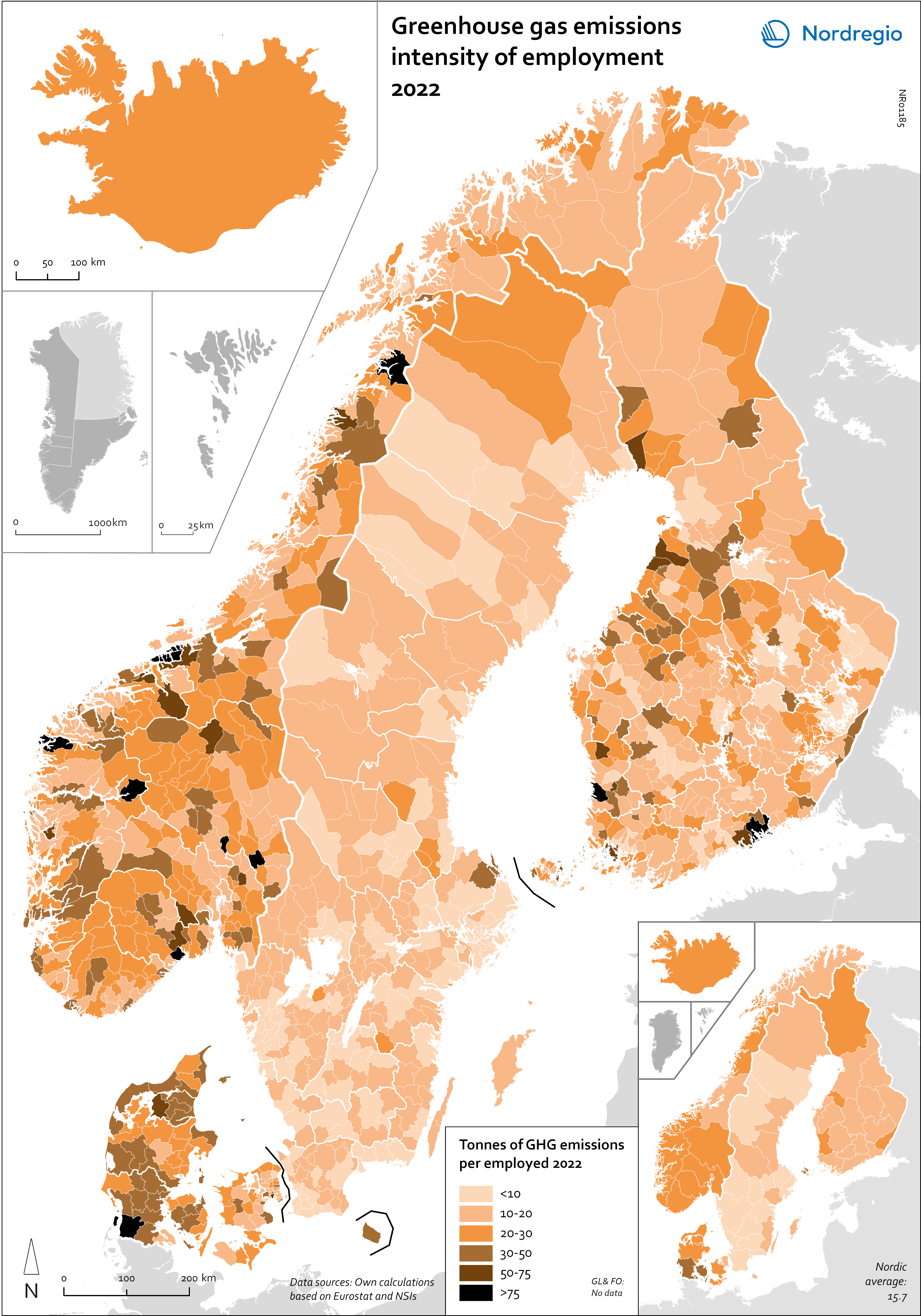This map shows the tonnes of greenhouse gas emissions per person employed in Nordic municipalities (big map) and regions (small map) in 2022. The data for Iceland is presented at the national level, while no data was available for the Faroe Islands and Greenland.
The map is based on data on emissions per sector and country from Eurostat and detailed employment by sector data from the Nordic statistical offices. By calculating the average emissions per person employed and per sector we could use municipal employment by sector data to assess the average emissions per person employed in each municipality. The results are an estimation based on the assumption that all jobs in the same sector have the same GHG emissions.
In 2022, greenhouse gas (GHG) emissions per person employed in the Nordic Region were 15.7 tonnes. This is higher than the EU average of 13.5 tonnes. There are also fairly big differences between the Nordic countries, with higher emissions per person employed in Iceland (28.6), Denmark (23.1) and Norway (20.5) and lower emissions in Finland (15.7) and Sweden (8). On the other hand, the emissions per person employed have decreased faster in the Nordic Region than for the EU as a whole. In the last decade, emissions per person employed fell by 24% in the Nordic Region compared to the EU average of 22%. The biggest decrease (32%) was in Finland.
The sectors with the highest emissions per worker vary slightly between the countries. In Sweden and Norway, the sector with by far the highest emissions per worker was the manufacture of petroleum coke and refined petroleum products. However, it should be noted that the number of workers in this sector is small. In Denmark, the highest emissions by person employed could be found in water transport; in Finland, in electricity, gas, steam and air-conditioning supply; and in Iceland, in the manufacture of basic metals. In general, the highest-emitting sectors with the most workers were transport (including water and air), agriculture and food production, mining and manufacturing. These sectors are important for the economy and for a working society, and most of these jobs cannot just be phased out. Instead, new methods and new skills are needed in order to phase out emissions without also eliminating the jobs.
On a regional level, the highest emissions per person employed can be found in Åland (40 tonnes), followed by Southern Denmark (31 tonnes), Satakunta in Finland, Iceland (29 tonnes) and Vestfold og Telemark in Norway (28 tonnes). The lowest emissions per worker could be found in the Swedish regions of Stockholm (5 tonnes), Blekinge (7 tonnes) and Jönköping (8 tonnes). In Åland, more than 70% of the emissions come from water transport, which can be explained by its position as a hub for ferry traffic between Sweden and Finland.
The municipalities with particularly high emissions per worker are dominated by certain high-emitting sectors, e.g. transport (e.g. Brøndby, DK), agriculture (e.g. Tønder, DK), refineries (e.g. Porvoo, FI) and manufacturing (e.g. Oxelösund, SE). Overall, emissions per worker are higher in rural areas (24 tonnes) compared to 18 tonnes for intermediate areas and 13 for urban areas.

